The content of the article
In our country, orphaned kittens are either drowned or fed. The last option can be afforded only by good-natured people, to whom you most likely relate. Toddlers up to a month old need a care that a newly-made mother cat cannot always provide. Due to certain circumstances, a person gets involved in raising a kitten, wanting to save the baby's life. We’ll talk about how to do this today.
What kittens need in the first days of life
Kittens have needs, when satisfied, you guarantee the kids that they will grow and develop in accordance with age. There can be many reasons for feeding. Among them:
- the birth was difficult, the cat needs treatment or surgery;
- kittens were left without a mother;
- the newly made mother lost milk;
- irresponsible past owners have thrown out kittens.
In order not to condemn the kids to certain death, perform a series of manipulations:
- If their coat is wet, wipe it with a towel or napkin. Then warm using the heat of your own palms or a heating pad.
- Carefully inspect the kitten for damage. Pay special attention to the face, make sure that the baby breathes through his nose.
- Check if all reflex functions are OK. To do this, pat the baby on the tummy, he should try to lie on his back. Now bring your palm to his face, the kitten will look for the nipple.
- Inspect the umbilical cord, it should be short. If this is not the case, a “bag” will hang at the end. Do not panic, do the following:
- turn your furry friend upside down;
- put it on a soft surface or on your feet;
- lift the bag with the umbilical cord so that everything flows out of it into the stomach of the kitten;
- sterilize scissors;
- measure from the abdomen 1-1.5 cm., cut the umbilical cord;
- arm yourself with greens, grease the umbilical cord and the area next to it.
Make sure the kitten is healthy. If you find he has breathing problems, it will be intermittent, hoarse, through his mouth, immediately go to the veterinarian!
Little kittens cannot control body temperature due to the lack of thermoregulation. If the babies are too cold, pneumonia develops, and death often occurs immediately. Therefore, make sure the baby is warm.
How to determine the age of a kitten
Before feeding babies, you need to know how many days or weeks they are. To do this, examine the condition of the kitten carefully.
- In the first three days, the ears with eyes will be tightly covered, the umbilical cord looks fresh. When the kids are hungry, they squeak a lot. The weight of each three-day-old kitten varies between 70–95 gr.
- If the baby is already 1–2 weeks old, he will see an incision in his eyes, the umbilical cord dries up slowly, and his eyelids rise.
- In the age group of 2-3 weeks, the eyes of the babies open completely, the ears slowly but surely rise. However, the kitten still can not eat himself. His first milk teeth are visible to him.
- At the age of 4 weeks, the baby almost walks, his fangs are visible, the kitten learns to eat on its own and tries to play with interesting objects.
Important!
The decisive stage in the future life of kittens is a period of 1-3 days. If the kids survived this time, you need to make every effort to feed them.
How to make a "nest" and choose food for a kitten
- In this case, the best solution is to find a cat that has recently rolled and is in the feeding position.She must take kittens and feed them. But if there is no such option, you will have to take care of the offspring yourself.
- As a nest, a dense cardboard box is suitable. You should also take care in advance of the presence of a heating pad, a thin fabric for covering the house, dense fabric such as terry or bikes for the very filling of the nest.
- As for food, babies are fed dry mix for children without any impurities or additives. A cat milk substitute is suitable, you can find it in a veterinary store. Goat whole milk will also work.
- You can not use store milk or even whole cow, such options are categorically not suitable for newly born babies. Only one feeding is allowed until you quickly get the right product.
- Buy a syringe that has a latex pad. Such a tool has a soft piston stroke; during feeding the baby will not choke. A pipette or nipple is also required to feed puppies or kittens.
- Make a nest out of the box, it should be dark and dry. The temperature in the "house" in babies is at least 26 degrees, stick to this mark. Put the soft toy in the nest of the kittens so that they feel support.
Kitten Feeding Technology
- Heat the milk you can find. For a single feeding, a cow is suitable. Warm it to 37 degrees, dousing the bottle with boiling water.
- Put the kitten tummy down in a box with low sides and a soft cloth inside. Place the palm of the baby on the back, and with your fingers, gently press the cheekbones to open the mouth.
- Insert the nipple into the mouth, wait until the baby begins to suck it. The kitten eats and immediately falls off the bottle. Usually babies fall asleep after feeding.
- In no case do not put the kitten in the mouth with a hard syringe, otherwise you will damage his gums. Feed your baby a drop with a soft nipple (pipette) so that the baby licks the milk.
- After the middle of feeding, put the kitten on your shoulder in an upright position so that it burps the air. Then continue to treat him drop by drop, allowing to lick the milk.
- Typically, the cat massages the kittens tummy, but after feeding you need to do this. Arm yourself with medical gloves, soak a swab in water, swipe the kitten’s belly clockwise until it defecates.
How often to feed a kitten
- If the kittens are a couple of days old, feed them every 1.5-2 hours. Please note that the procedure does not depend on the time of day. The animal’s body is small enough, but colossal energy is needed for development. In addition, the digestive system triggers and stimulates the immune system.
- After 1 week, babies need to be fed every 3-4 hours. Do not forget to watch the weight of animals. If kittens are not gaining weight well, this is a bad sign. The pet is poorly developed and delayed. These kittens need to be given more attention. Provide frequent meals if necessary.
- On average, kittens are born with a weight of about 70 grams. After 1 week, the mass should be up to 125 g. On day 14, the weight will be 200 grams. Feeding should be about 7 times a day, even at night. After 4 weeks, pets should weigh an average of 275 grams. It is not necessary to feed at night.
- After 1 month, the weight of the kitten should vary within 365 grams. It is necessary to feed animals 5-6 times a day. After this, you can gradually accustom kittens to ordinary food. Introduce complementary foods. Consult a veterinarian in advance; your doctor will tell you which vitamins to add.
- At home, you can very well provide babies with the intake of the required amount of glucose. The substance will noticeably accelerate the growth and development of the kitten. Stir up to 2 g. glucose per serving of food. Do not forget about immunostimulants and vitamins (gamavit and tetravit). Mix 1 drop in a serving of food.
- It is strongly recommended that babies be given bone meal with food. It has a positive effect on the development of the musculoskeletal system and joints. Stir in 1.5 g. flour per serving. Fish oil is necessary for the general strengthening of the body of kittens. The substance can be given 2 times a week, 1 drop per serving of food.
- You can use grated cottage cheese as a first feeding. Add vitamins in ampoules D, A. 1 drop per serving of food. Dilute the cottage cheese with milk, smear it on your finger and let the kitten lick. Then gradually train the animal to eat from a shallow saucer.
How to choose a milk replacer
- After giving birth, a cat excreted colostrum in the first days. After this, milk begins to form. In the first case, the composition helps kittens protect their body from all kinds of infections. Colostrum is an immunostimulant.
- From this it should be concluded that in the first days of life kittens need colostrum. If you doubt that you can handle this task, contact your veterinarian without fail. A specialist will advise you to purchase a special serum. The composition is made from the blood of a strong cat. Next, the veterinarian will administer the composition to the children subcutaneously.
- As a result, small animals receive a portion of the necessary antibodies that resist pathogenic viruses and protect the body from disease. Also, if possible, put the kittens in the newly born cat. Such an option would be the best.
- Cat's milk is unique, it contains almost 2 times more protein than cow's milk. Also, the raw materials are high in fat and nutrients. Cat milk has a high concentration of taurine. This amino acid provides kittens with a stable breakdown of fat. Therefore, it is worth giving preference to special substitutes for cat's milk.
- Serums are produced by eminent manufacturers who specialize in the manufacture of premium animal feeds. Such mixtures are as close as possible in composition with cat's milk. The product contains the required amount of amino acids. If you follow a simple instruction, babies will not have an allergic reaction and digestive problems.
- In most cases, manufacturers immediately pack the product in portioned bags. The kit should have small bottles and nipples. Apply the mixture is not difficult. Such serums can be purchased at any pet store or veterinary pharmacy.
- Sometimes it happens that the cat simply does not have milk, and she did not abandon her kittens. In this case, you should act by the same analogy as with orphaned animals. At first, you can resort to the usual mixture for infants. In this case, baby food must be diluted with boiled water. Take proportions 1 to 2 (mixture and liquid).
If you have a similar situation, take it seriously. If in doubt, consult your veterinarian. Remember, whole cow milk is not allowed to be given to kittens. Animals from the lack of enzymes will die. Be careful and attentive when nursing babies.
Video: how to feed a breast kitten

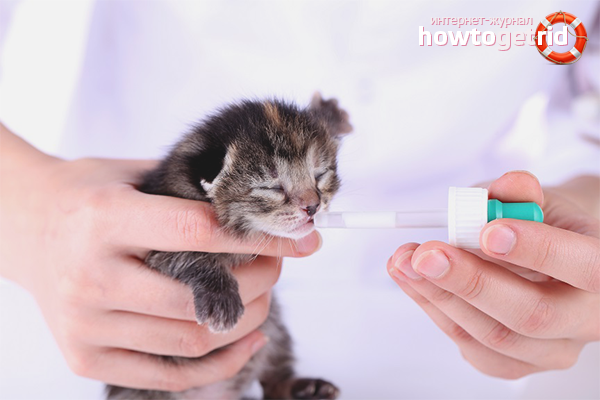
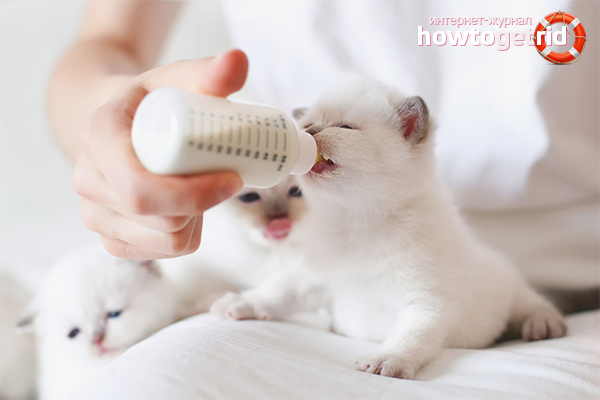



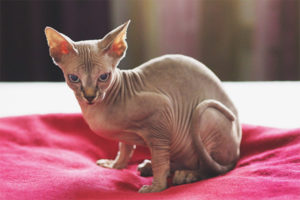
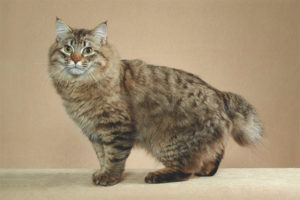
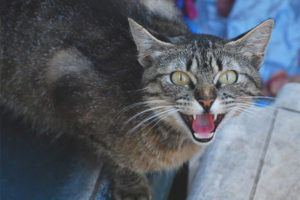
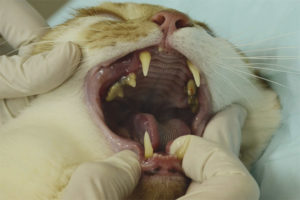
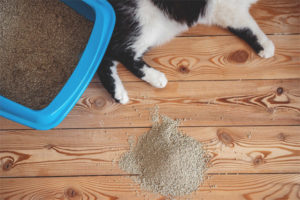
Submit
Great video tips !!! It was very useful, since just recently someone threw a newborn kitten onto the asphalt, but I did not pass by, but I picked it up and am nursing now !!! The baby is very small, the tummy is injured (there are cuts and a hernia)! She took the kid to the veterinary clinic, received written recommendations,now everyone is doing it! It is disturbing that the kitten is now on the sixth day began to eat weakly! What to do?